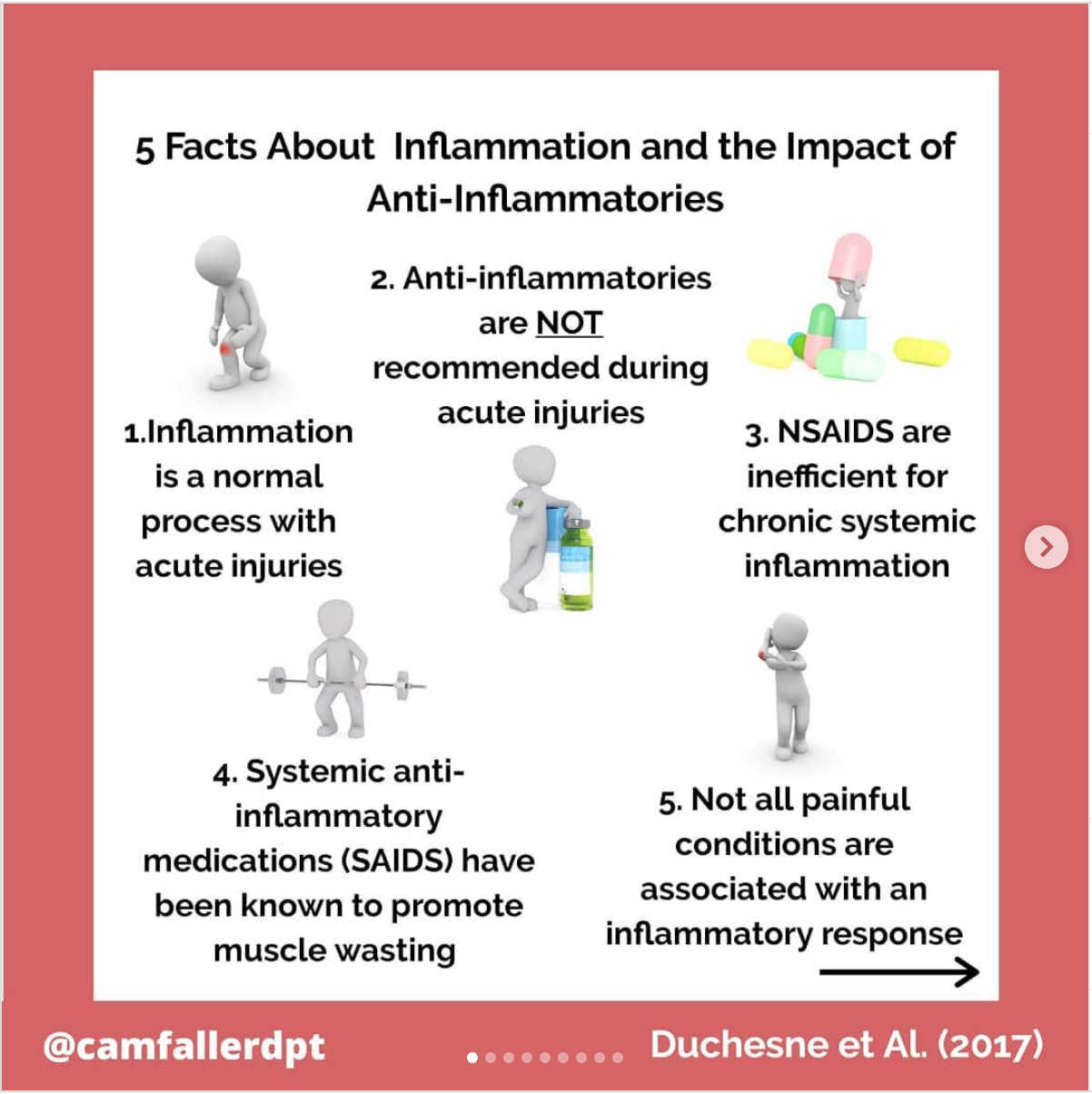Laurie's Blogs.
Aug 2020
INFLAMMATION & ANTI-INFLAMMATORIES in Skeletal Muscle Healing
The following information comes from this paper:
Duchesne E, Dufresne SS, Dumont NA. Impact of Inflammation and Anti-inflammatory Modalities on Skeletal Muscle Healing: From Fundamental Research to the Clinic. Phys Ther. 2017;97(8):807-817.
Some snippets from the abstract:
- Although inflammation was originally believed to interfere with skeletal muscle regeneration, several recent studies have highlighted the beneficial effects of inflammatory cells on muscle healing.
- To better appreciate the paradoxical roles of inflammation, clinicians must have a better comprehension of the fundamental mechanisms regulating the inflammatory response.
- In this perspective article, cellular, animal, and human studies were analyzed to summarize recent knowledge regarding the impact of inflammation on muscle regeneration in acute or chronic conditions.

https://www.instagram.com/p/CCLXCU1HGoP/
Here are the take away points:
- Inflammation is a Normal Process with Acute Injuries - Inflammation and muscle regeneration are closely interconnected through complex cellular, physical, and chemical interactions which is beneficial during acute injuries, but can be detrimental in chronic conditions
- Anti-inflammatories are NOT recommended during acute injuries - Anti-inflammatory drugs target an enzyme known as COX-2, which when it is inhibited, it will have a direct effect on the proliferation of satellite cells thus impairing muscle healing
- NSAIDS are inefficient for chronic systemic inflammation - When inflammation becomes more systemic vs local (such as prolonged osteoarthritis); NSAIDS will become inefficient in management with more potential for harm than benefits
- Systemic anti-inflammatory medications (SAIDS) have been known to promote muscle wasting - Prolonged use of systemic anti-inflammatory modalities such as SAIDs might have detrimental side effects on skeletal muscle by promoting muscle wasting.
- Not all painful conditions are associated with an inflammatory response - Certain tendinopathies have shown very little inflammatory markers associated with them in which case anti-inflammatory modalities would have no efficacy for treatment.
This is not only important for human rehab, but animal rehab as well. I think that too often animals are prescribed anti-inflammatories for lamenesses that aren’t properly diagnosed or addressed. “Likely a soft tissue injury” isn’t a diagnosis, and subsequently, nor should it warrant the prescription of an NSAID. Then, even if a true diagnosis of a soft tissue injury has been made (i.e. a tendinopathy of the supraspinatus), then research says, not to prescribe a NSAID anyways!
We need all of these cases to be referred to rehab!
How can we make that happen?
- Educate the GP veterinarians
- Educate the public
- Communicate your findings
On that note… Now you know more! Now you have some goals for spreading the message! Now we get on with making our patients better!


